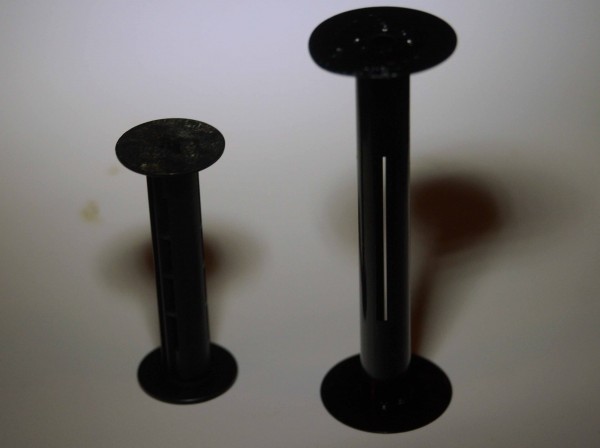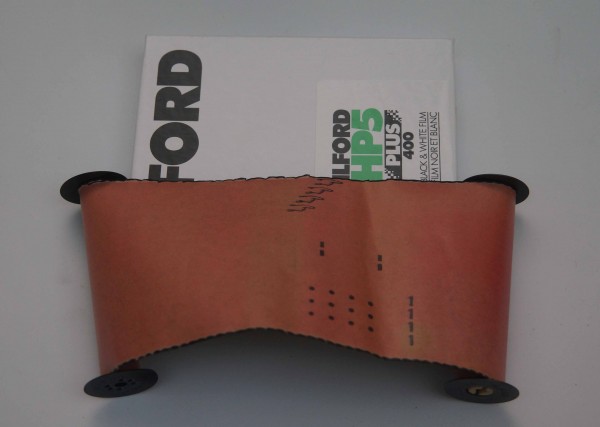If you’re at all interested in my occasional posts about trying to make old cameras work, read on – this one is the oldest one yet. The Houghton Folding Ensign 3 1/4A was manufactured in London around 1912, and is gigantic by modern standards, at about a foot tall, 4 1/2 inches wide, and a good 2 inches deep.
It has three shutter speeds – 1/25, 1/50 and 1/100 second – plus “B” and “T”, as well as six aperture settings ranging from f/4 (!) to f/128. Focusing is accomplished by moving the bellows – the front end clicks into one of four slots marked 5, 10, 25 feet and infinity. I wonder how much success they had with those options at f/4!
“Victus” refers to the shutter, manufactured by Wollensak, and “G. Gennert” is Gottfried Gennert, who sold photographic supplies in the mid- to late 1800s. You can see one of his catalogs here. Possibly he supplied the lens for this camera – there’s not much information on the ‘net about the camera, so I’m guessing in some cases.
For a 102-year-old folding camera with leather bellows, this camera is in remarkably good shape. It’s common for folders half as old as this one to have tiny pinholes in the corners of the folds; sticky shutters; or any other number of problems. When I discovered that this one appeared to be in full working order, I wanted to see if I could actually take some pictures with it.
There was just one problem – the camera is designed for 122 film – “postcard” sized at 3.25 by 5.5 inches – which hasn’t been made for years. The widest film currently available is 120 film, which is just over 2.25 inches wide. Below, a 122 spool is shown for comparison with a 120 spool.
So…I acquired an old roll of 122 size “found film” (the roll had no salvageable photos, but I needed the additional spool and the used backing paper), and then I ordered some “sheet film” – which comes in 4×5 inch individual sheets. (As a side note, figuring out the packaging and directions for sheet film was a separate problem to solve. I was afraid I’d open the box and inadvertently expose the whole $25 pack! Check out this link if you’re curious about how they address these concerns and others)
In complete darkness, I used a piece of cardstock cut 3 1/4 inches wide to trim 4 sheets of 4×5 sheet film down to 3.25 by 5 inches. I had prepared by marking the backing paper where the first four exposures were indicated with a tiny piece of masking tape. This is necessary because you manually crank the film forward and the number on the back of the paper tells you when to stop. See the photo below. The idea is to have a sheet of film (in the box) at the right place in the camera (facing the lens) when the little number 1 is showing in the window at the bottom left of the back of the camera.
Then, in the dark, I unrolled the backing paper and taped four of the modified sheets to the backing paper with masking tape.
Just for the record, it’s really hard to tape things into place with masking tape in complete darkness. But I rolled everything up, switched on the lights, and loaded up the camera. Off to take some pictures!
I snapped four shots and came back home, planning to unroll the film in complete darkness. I opened the camera and discovered that one of the four film sheets had somehow been pulled off the backing paper (messy masking tape job, probably) and was now taped exactly across the exposure area, blocking all the other film!. Not only was this one ruined, there was no way to tell which of the four this was – if it was the first one, all the other shots would be ruined as well!
As it turned out, sheet #2 was the one that became detached, blocking sheets #3 and #4, as well as tearing the edges of the backing paper in about 10 places. So in the end, I got one single picture. You can even see the masking tape…
src=”https://www.flickr.com/photos/tazmpictures/13647845855/in/set-72157643470145004/player/
With a bit of editing and cropping, we have this result:
src=”https://www.flickr.com/photos/tazmpictures/13647619824/player/” height=”378″ width=”640″ allowfullscreen=”” frameborder=”0″>
Not bad for a 100-year-old camera. How many of the cameras we currently own will perform as well in 2114?
I look forward to trying to salvage what I can of the backing paper and giving this another try.






Or you could load some 120 film on the back and reel and just have panorama shots; you’d have to use grease pencil in the viewfinder as an indicator of what will be taken.
By the way, if you invest in a film changing bag, doing the film prep may be easier… http://www.bhphotovideo.com/c/search?Ntt=film+changing+bag&N=0&InitialSearch=yes&sts=ma&Top+Nav-Search=